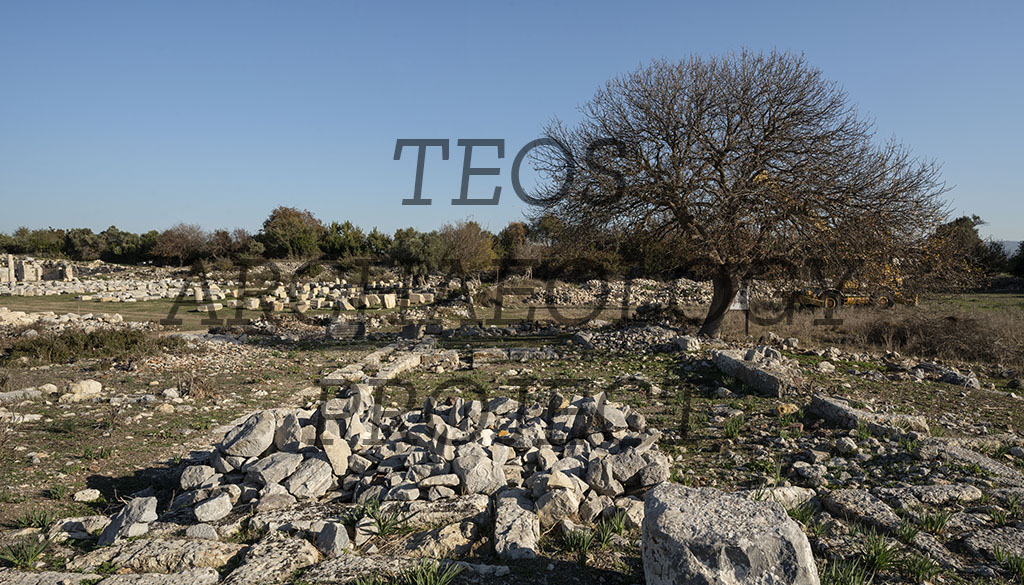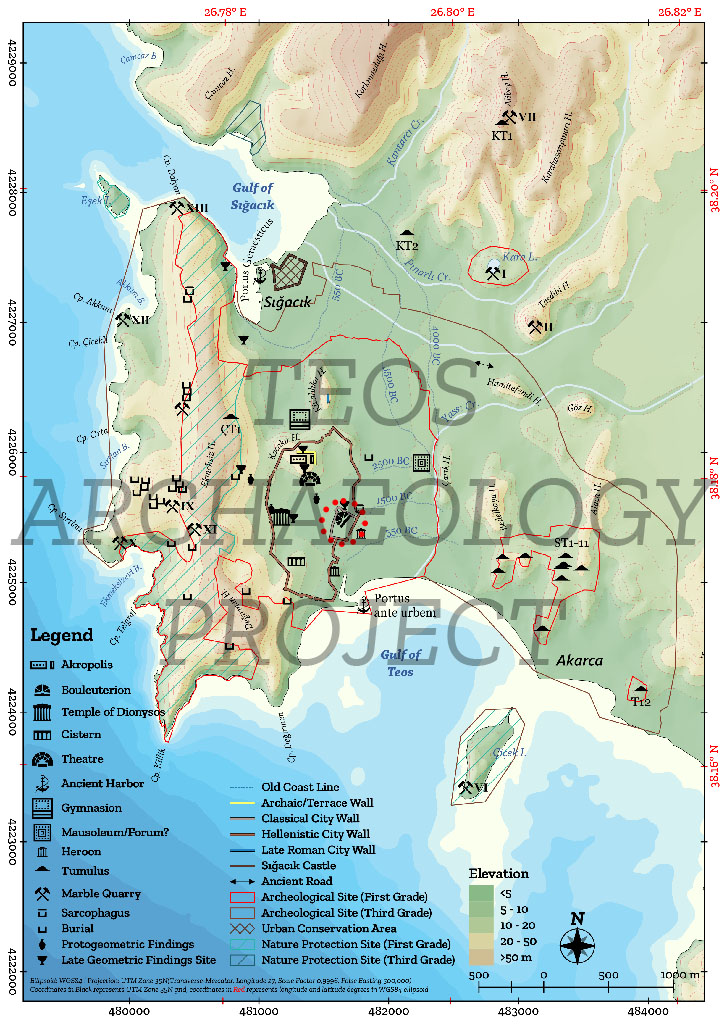
Aerial Photograph of the Temple of Rome and Augustus in thee Agora (Kadıoğlu, 2021, 178, Figure 65a)
The information about the building, what is inside the agora, such as the temple of Zeus Sosipolis in Magnesia is limited for now. This small temple measuring 8,10 x 18, 40 m, southeast of the Bouleuterion has three sections; Pronaos, cella and opisthodomos. Unlike the Greek temples oriented to the east, the entrance of the temple faces southwest. The temple in the agora, which is oriented to the southwest at an angle of approximately 24, is similar to the Ankyra Augustus and Roman temple (44). The cella wall of the temple, of which only upper surface can be seen today, was built with double walls and a scarf, as in the eastern wall of the bouleuterion or the temenos walls of the Dionysus Sanctuary. The long side walls of the temple and the opisthodomos wall approximately 1.10 m thick and the pronaos wall 1.20 m thick.
The pronaos of the long rectangular temple is 5.50 meters deep and almost half the size of the 9.50 m deep cella (1:2 ratio). With a depth of 2,15 m, the narrow opisthodomos is almost equal to half the depth of the pronaos. Therefore, the ratio of the temple parts to each other, starting from the pronaos, is 2:4:1. With these proportions, this temple in the agora is proportionally similar to the Meander Magnesia Temple of Zeus Sosipolis (7,38 x 15, 82 m) 10 and the larger scaled Temple of Dionysus in Teos or the Temple of Athena in Priene. As seen in many small-scale temples in Western Anatolia during the Hellenistic Period, it was suggested by D. M. Uz that this small temple in Teos Agora had a prostylos plan, but that it might have been tetrastyl-amphiprostylos planned due to the very narrow inner depth of the opisthodomos. However, current research does not support this.

Archaeological map of Teos and its surroundings (Kadıoğlu, 2021, 25, Map 4)
